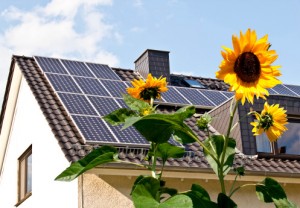Just one household has been fitted with, and is actively using, energy efficient appliances as part of the Green Deal.
 However, more than 58,000 assessments had been completed up to the end of July for the energy saving scheme, introduced by the government in January.
However, more than 58,000 assessments had been completed up to the end of July for the energy saving scheme, introduced by the government in January.
According to statistics from the Department of Energy and Climate Change (DECC), 419 Green Deal plans were in the system by the end of July, up from 306 at the end of June.
For those who choose Green Deal finance, there are three stages in the life cycle of a Green Deal Plan for which reports are generated, DECC explains.
-the first stage (a ‘new’ Green Deal Plan) is after a customer has obtained a quote from a Green Deal Provider and confirmed they wish to proceed. The Green Deal Provider has then successfully requested a Green Deal Plan record prior to signature by the customer. It is possible that more than one Green Deal Plan may be requested for each household. There were 286 households with a ‘new’ Green Deal Plan reported up to the end of July.
– the second stage (a ‘pending’ Green Deal Plan) is when a Green Deal Plan has been signed by the customer, progress is being made to install Green Deal Plan measures and the Plan is being finalised so that charging can start. There were 132 households with ‘pending’ Green Deal Plans reported up to the end of July.
– the final stage (a ‘live’ Green Deal Plan) is after the measures have been installed in the property, the information required to disclose the plan to future bill payers has been attached to the Plan and the energy supplier has all the information required to bill Green Deal charges. There was one ‘live’ plan at the end of July.
Speaking about the take-up figures, Ecology Building Society’s Chief Executive Paul Ellis said: “We’re disappointed but not surprised by these results. The urgent economic and environmental need to make our homes more efficient isn’t matched by demand from homeowners, and the incentives provided by the Green Deal just aren’t enough to create this market. We need to see a more competitive interest rate, a simpler process and wider policy initiatives to drive take-up, such as an energy efficiency Feed-in Tariff, Council Tax or Stamp Duty discounts.
“Banks and building societies have their role to play, too: our C-Change retrofit discounts have led the way in showing that mortgage lending can support people to reduce their home’s carbon emissions. Now we need others to follow suit.
“This isn’t just about being green – in an era of rising fuel costs, it’s about a sensible long term approach to finance. We now know that a higher EPC rating can have a real impact on a home’s selling price, and evidence from the US suggests that mortgages on energy efficient homes are less likely to default.”



